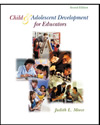| alphabetic system | The structure of some languages, including English, whereby single shapes in the written language make up letters, which in turn, are linked to specific sounds; contrast with ideographic system.
|
 |
 |
 |
| bilingual | The ability to speak two languages.
|
 |
 |
 |
| bilingual education | A perspective or approach to teaching children that uses at least two languages during instruction, usually a child's native language and the second language the child is acquiring.
|
 |
 |
 |
| communicative competence | Learning to use language in an appropriate manner; knowing what words and structures to use on what occasion. This is the major area of linguistic growth during childhood, through adolescence, and continuing into adulthood.
|
 |
 |
 |
| comprehension | An active process in which readers strive to construct a meaningful interpretation of written or oral information.
|
 |
 |
 |
| context knowledge | A decoding strategy; using the surrounding text and one's background knowledge to identify an unknown word; contrast with phonic knowledge and sight word knowledge.
|
 |
 |
 |
| critical period | (1) Periods of development during which certain basic structures are formed or a child is most vulnerable or responsive to environmental influences. (2) Lenneberg's hypothesis that language development has a biological basis and there is a time in infancy when particular neurological faculties develop. It states that if certain internal or external conditions related to language development are missing, then a child will never be able to acquire language.
|
 |
 |
 |
| decoding | The process that readers use to determine the oral equivalent of written words.
|
 |
 |
 |
| dialect | A variation of a single language spoken by members of a speech community; contrast with accent; see social dialect.
|
 |
 |
 |
| emergent literacy | The concept that literacy learning is ongoing from birth.
|
 |
 |
 |
| English as a second language (ESL) | _A special language learning program for nonnative speakers that focuses narrowly on learning the target language.
|
 |
 |
 |
| functionally literate | Able to read and write well enough to negotiate daily life.
|
 |
 |
 |
| grammar | Language rules that extend from the simplest level of combining sounds to the complex level of extended conversations including phonology, semantics, syntax, pragmatics, and the lexicon; see Figure 5.1.
|
 |
 |
 |
| holophrases | Refers to single words intended to convey more complex meaning typically utilized by children aged 18 to 24 months.
|
 |
 |
 |
| invented spelling | Unconventional ways children spell words in their early attempts at writing.
|
 |
 |
 |
| language | A symbolic system in which a series of sounds make words to represent an idea, an object, or a person and eventually becomes the medium through which we think.
|
 |
 |
 |
| language acquisition device (LAD) | _Chomsky's idea that children are born with a mechanism in their brains that enables them to recognize the universal rules that underlie all languages and the structure and grammar of their native language.
|
 |
 |
 |
| literacy | Constructed meaning; meaning created through the interaction of reader or writer and written text.
|
 |
 |
 |
| metalinguistic awareness | The ability to think and talk about the relationship between print and sound in a language; for instance, a child's ability to identify the first sound as making the difference between the words rat and bat.
|
 |
 |
 |
| phonemic awareness | The ability to connect the distinctive sounds, or phonemes, in words to letters.
|
 |
 |
 |
| phonic knowledge | A decoding strategy; the rules for combining sounds to make words and the stress and intonation patterns of a language (Figure 5.1); contrast with context knowledge and sight word knowledge.
|
 |
 |
 |
| reading readiness approach | An outdated conception of literacy development that emphasized a set of skills children needed to master before beginning formal reading instruction; contrast with emergent literacy.
|
 |
 |
 |
| sight word knowledge | A decoding strategy; the developing recognition and understanding through exposure of the meaning of words; contrast with context knowledge and phonic knowledge.
|
 |
 |
 |
| simultaneous bilingual | Learning several languages at the same time.
|
 |
 |
 |
| standard American English (SAE) | _The language of instruction in schools.
|
 |
 |
 |
| structured immersion | A method for serving English-learning students in which children receive up to a year of intensive training in English before they are placed in an English-speaking classroom.
|
 |
 |
 |
| successive bilingualism | A person who learns the dominant language (English) but retains his or her native language as well (Spanish); the stages of language development will be different from bilingual or multilingual learners; see mixed speech.
|
 |
 |
 |
| syntax | The structure of language; the way words are combined to form phrases and sentences.
|
 |
 |
 |
| telegraphic speech | Early speech that is characterized by typically short, simple sentences composed primarily of content words: "Kendall swim pool."
|
 |
 |
 |
| whole language | A language philosophy characterized by a set of beliefs including the purpose of language is to create and share meaning; language is language, regardless of whether it is spoken or written; language is best learned by using it in a social context for authentic purposes.
|
 |
 |
 |
| writing across the curriculum | A program approach in which writing is incorporated into all subject areas, from music to mathematics.
|



 2002 McGraw-Hill Higher Education
2002 McGraw-Hill Higher Education